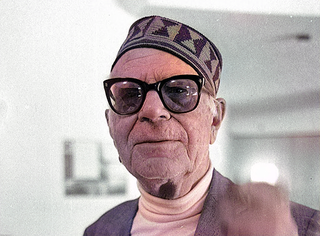
Arezzo is a city and comune in Italy and the capital of the province of the same name located in Tuscany. Arezzo is about 80 kilometres southeast of Florence at an elevation of 296 metres (971 ft) above sea level. As of 2022, the population was about 97,000.
This article contains information about the literary events and publications of the 13th century.
Dolce Stil Novo, Italian for "sweet new style", is the name given to a literary movement in 13th and 14th century Italy. Influenced by the Sicilian School and Tuscan poetry, its main theme is Divine Love. The name Dolce Stil Novo was used for the first time by Dante Alighieri in Purgatorio, the second canticle of the Divina Commedia. In the Divina Commedia Purgatory he meets Bonagiunta Orbicciani, a 13th-century Italian poet, who tells Dante that Dante himself, Guido Guinizelli, and Guido Cavalcanti had been able to create a new genre: a stil novo.

Italian literature is written in the Italian language, particularly within Italy. It may also refer to literature written by Italians or in other languages spoken in Italy, often languages that are closely related to modern Italian, including regional varieties and vernacular dialects.

The Sicilian School was a small community of Sicilian and mainland Italian poets gathered around Frederick II, most of them belonging to his imperial court in Palermo. Headed by Giacomo da Lentini, they produced more than 300 poems of courtly love between 1230 and 1266, the experiment being continued after Frederick's death by his son, Manfred.

Ignazio Buttitta was an Italian poet who wrote predominantly in Sicilian.

Cino da Pistoia was an Italian jurist and poet. He was the university teacher of Bartolus de Saxoferrato and a friend and intellectual influence on Dante Alighieri.

Guittone d'Arezzo was a Tuscan poet and the founder of the Tuscan School. He was an acclaimed secular love poet before his conversion in the 1260s, when he became a religious poet joining the Order of the Blessed Virgin Mary. In 1256, he was exiled from Arezzo due to his Guelf sympathies.
Paolo Lanfranchi da Pistoia was a noted Italian poet who wrote in both the Italian and Occitan languages. He is thus sometimes described as a troubadour. A native of Pistoia—he was a major cultural figure of the Duecento there—his sonnets have been praised for their originality.
(La) Compiuta Donzella, called either di Firenze or Fiorentina, was the earliest woman poet of the Italian language, active in the second half of the 13th century. Three of her sonnets survive in a single manuscript, and one is half of a tenzone. Compiuta may be her given name, but more probably a senhal. Her full name translates "the accomplished young lady from Florence". Her existence was once in doubt and she was considered a construct of the poets, but this view has been discarded.
Chiaro Davanzati was an Italian poet from Florence, one of the Siculo-Tuscan poets, who introduced the style of Sicilian School to the Tuscan School. He was one of the most prolific Italian authors before Dante: at least 122 sonnets and sixty-one canzoni by Chiaro are known, many of them in tenzone with other poets. Only Guittone d'Arezzo produced more lyrics in the thirteenth century.
Stefano Protonotaro da Messina was a poet of the Sicilian School, probably at the court of Frederick II. He left behind only three poems, but one is the earliest piece of writing in the Sicilian language. This work is of immense philological and linguistic importance.
Bonagiunta Orbicciani, also called Bonaggiunta and Urbicciani, was an Italian poet of the Tuscan School, which drew on the work of the Sicilian School. His main occupation was as a judge and notary. Fewer than forty of his poems survive.
Jacopo da Leona, also spelt Iacopo was an Italian medieval jurist and poet who died in 1277.
Megliore degli Abati was an Italian poet from 13th century Florence. He was a friend of the poet Guittone d'Arezzo. He is said to have been fluent in Provençal. He was considered to be one of the first poets who wrote in the vernacular.

Guido d'Arezzo is a crater on Mercury. It has a diameter of 58 kilometers. Its name was adopted by the International Astronomical Union (IAU) in 1976. Guido d'Arezzo is named for the Italian music theorist Guido of Arezzo, who lived from 990 to 1050.

Luca Martini was an Italian engineer, academic, poet, and art patron known for commissioning projects from among other artists Pierino da Vinci and Giorgio Vasari.

Sacro Cuore di Gesú is a Modern, Roman Catholic church located on Via Monsignor Gilberto Baroni in the Baragalla suburb south of central Reggio Emilia, Italy.